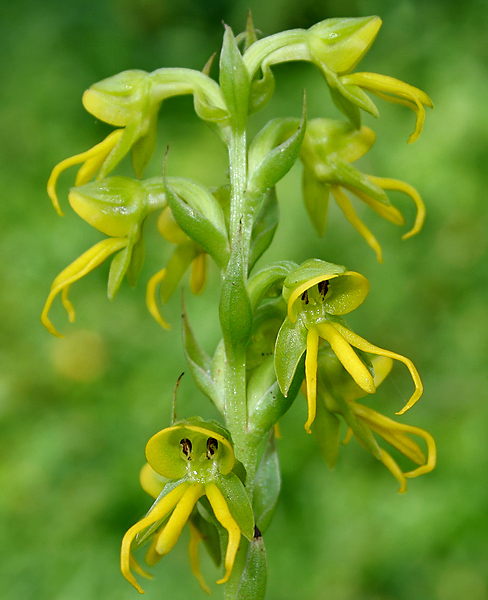Discovery of New Orchid Species 'Habenaria diwata' in Mt. Malinao

A groundbreaking discovery in the field of botany has emerged from the highland mossy forests of Mt. Malinao, located in Albay, Luzon, Philippines. Researchers have identified a previously unknown orchid species, named 'Habenaria diwata,' which adds to the rich biodiversity of the region. This significant finding was officially announced by the Philippine Taxonomic Society in a release dated October 1, 2023, following extensive field studies and taxonomic analysis.
The discovery of 'Habenaria diwata' is noteworthy not only for its botanical significance but also for its implications for conservation efforts in the Philippines, an archipelago rich in endemic flora and fauna. According to Dr. Maria Bustamante, a botanist at the University of the Philippines Los Baños and co-author of the study detailing this discovery, "The identification of this orchid species underlines the importance of preserving our natural habitats, which are increasingly threatened by deforestation and climate change."
Habenaria diwata is characterized by its unique floral morphology, which includes distinctive perianth structures and a robust growth habit. The full description of the species, including illustrations and photographs, was published in the Philippine Journal of Botany, a peer-reviewed academic journal, further validating the research and findings by Dr. Bustamante and her collaborators, Dr. Raul Bustamante and Dr. Miguel Altamirano.
The mossy forests of Mt. Malinao are known for their diverse ecosystems, harboring numerous species of plants and animals, many of which are endemic to the region. In a statement, Dr. Alfonso Rodriguez, an ecologist with the Philippine Biodiversity Conservation Foundation, emphasized the importance of such discoveries: "Each new species found is a reminder of the rich biodiversity we have and the urgent need to protect these fragile ecosystems."
The taxonomic classification of 'Habenaria diwata' is a part of ongoing research efforts to catalog the rich plant life of the Philippines. The Philippine Taxonomic Society has been at the forefront of these efforts, working closely with local communities and conservation groups to promote sustainable practices and conservation awareness.
In addition to its ecological significance, the discovery of 'Habenaria diwata' presents opportunities for further research in plant biology and conservation strategies. As noted by Dr. Iris Tan, a conservation biologist at the University of the East, "Understanding the genetics and ecological roles of newly discovered species can inform conservation policies and enhance our strategies for biodiversity preservation."
The implications of this discovery extend beyond botany; they touch on broader environmental issues such as habitat loss and climate change. With increasing pressures on natural habitats, the identification of new species like 'Habenaria diwata' highlights the critical need for conservation action. The Philippine government, through its Department of Environment and Natural Resources (DENR), has been actively working on policies to protect biodiversity, including the establishment of protected areas in regions like Mt. Malinao.
As conservation efforts continue, the discovery of 'Habenaria diwata' serves as a beacon of hope for biodiversity in the Philippines. As Dr. Bustamante stated, "Every new species discovered is a testament to the resilience of nature and a call to action for all of us to safeguard our environment for future generations." The ongoing research and conservation initiatives in the region are crucial for maintaining the ecological balance and ensuring that such discoveries continue for years to come.
Advertisement
Tags
Advertisement





